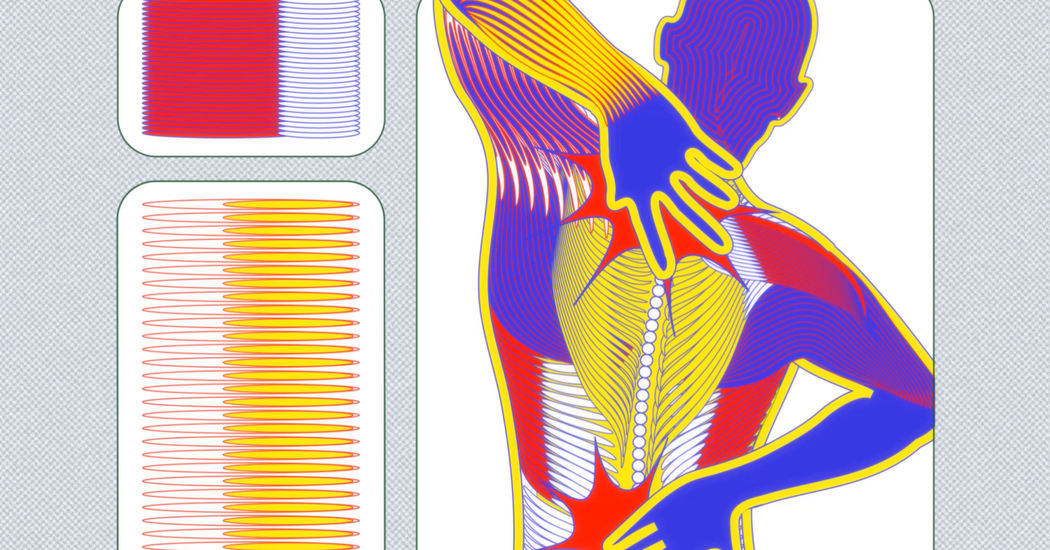Repeatedly doing the same type of activity — whether it’s running, lifting or sitting — can have serious downsides.
When you head out for your daily run, with each stride you’re strengthening your quadriceps, your hamstrings and your upper calf muscles. The muscles on the sides of your hips, however, aren’t growing much.
If you have one sport you do regularly, like running, biking or tennis, and rarely do anything else, you run the risk of what’s known as muscle imbalance.
Imbalances happen when one muscle is significantly stronger than another. The two muscles can be on opposite sides of a joint or bone, or even across your body. For example, if a weight lifter overtrains her biceps and ignores her triceps, or an office worker spends ten hours a day peering at his computer screen, leading to weak shoulder muscles, imbalances can emerge. This can lead to pain, poor posture and even injury.
Ann Crowe, a physical therapist in Clayton, Mo., who works primarily with runners and cyclists, said most of her clients’ foot, knee, hip and back pain can be traced to these imbalances.
Runners and cyclists typically focus on the cardiovascular benefits of their sports, but neglect strength training, Dr. Crowe said. As a result, they often have weak glutes and strong quads.
Studies suggest that muscle imbalance can especially contribute to shoulder, lower back, elbow and wrist injuries in athletes who play sports with overhead movements, such as water polo, tennis and basketball. Another study found professional soccer players with strength imbalances were four to five times more likely to suffer a hamstring injury as compared to those with no muscle imbalance.
